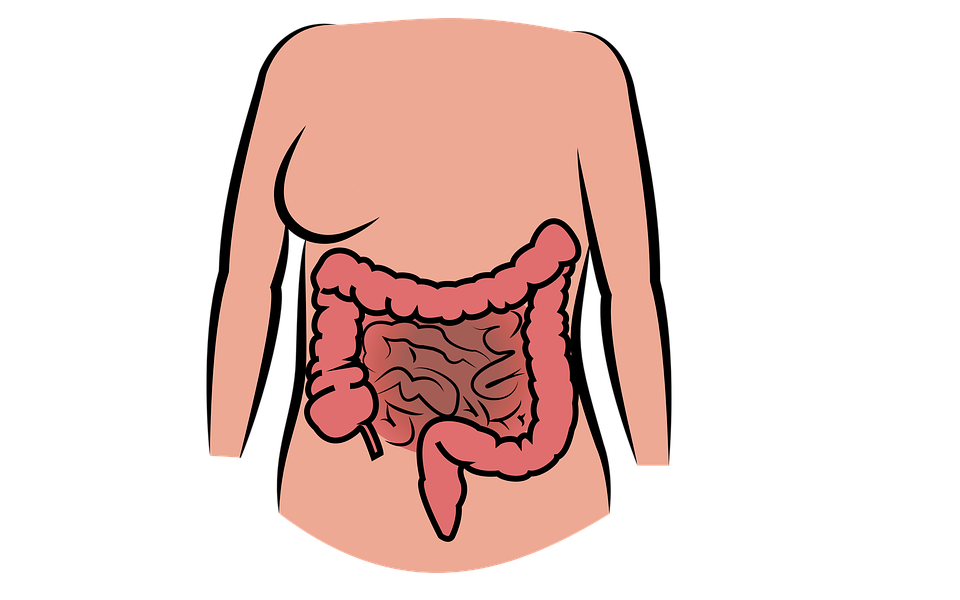Fat sometimes gets lodged in certain body parts that we don’t think about… like the liver! Although this phenomenon is generally benign, it can sometimes develop into a severe form, increasing the risk of serious liver disease. It is therefore important to diagnose it quickly to take the appropriate measures and thus reverse the trend.
All the information in our article.
Hepatic steatosis: definition
Non-Alcoholic Hepatic Steatosis (NASH for Non-Alcoholic Steato-Hepatitis) follows the fatty liver (NAFL for Non-Alcoholic Fatty Liver). It corresponds to the accumulation of fats in the form of triglycerides, liver cells, the hepatocytes. We speak of steatosis when more than 5% of the organ’s cells are concerned.
This situation is observed in people with an excessively fatty liver and who are at the stage of NASH associated with severe fibrosis and therefore with a high risk of developing cirrhosis and liver cancer.
Men and women are equally affected. If a difference exists, it is because of the superior ability of women to follow recommendations over the long term and to take care of themselves nutritionally.
As with obesity and diabetes, there is a significant socioeconomic impact: people with low socioeconomic status are at the most critical risk (eating well and regular exercise may require substantial financial resources).
Causes of NASH
Several phenomena can contribute to the accumulation of fat in the liver:
– An overly rich diet (industrial food and junk food): this condition is thus linked to obesity, which affects 16% of the population in our country (80% of obese people have NASH). It also appears in diabetic patients with the poorly controlled disease (6 out of 10 diabetics – 62.4% – are concerned).
– It is favored by a cholesterol level that is too high (hypercholesterolemia), generally resulting from a diet that is too rich in saturated fats (junk food) and poor in unsaturated fats (vegetable oils, fish) as well as in fiber and vitamin C.
– A protein deficiency is linked to a general state of malnutrition or to following a vegan diet.
Good to know: sodas, which are very rich in fructose, also promote the production of fat in the liver (as with alcohol, the transformation of fructose requires a lot of work for the liver, and while it processes it, it can only store excess fats and sugars in its cells) and consuming more than one can per day is a major risk factor for NASH. Diet sodas (which contain sweeteners) are also concerned, especially since drinking more than two glasses of sweetened beverages per day would increase mortality from circulatory disease by 50% compared to low consumption.
This may also be due to exposure to certain substances:
– drugs, such as corticosteroids (anti-inflammatory drugs), synthetic estrogens (birth control or menopause treatment), tetracycline (antibiotic), tamoxifen (used in breast cancer treatment), highly active antiretroviral treatments used in HIV patients…;
– Toxic products: insecticides (DDT, phosphorus…) or glyphosate, which, according to a recent study (Mills et al. Clinical Gastroenterology and Hepatology, April 25, 2019) is significantly and unambiguously linked to the development of NASH.
Steatosis can also develop during pregnancy, after bariatric surgery, or too rapid weight loss. Women of childbearing age have been reported to have metabolic steatosis with severe risks of complications (hypertension in particular) associated with it: pre-eclampsia, eclampsia, and HELLP syndrome.
Furthermore, being overweight even before conception aggravates hepatic steatosis in the child or in adolescence.
Other risk factors for hepatic steatosis are smoking, with more than 10 packs/year, alcohol consumption, even in moderation (more than 10 g/day), and psychosocial stress.
Symptoms of NASH

Hepatic steatosis is usually asymptomatic; however, the liver may be slightly painful, with a slightly increased volume.
Eventually, however, an inflammatory reaction develops. It starts with NAFL, i.e., a fatty liver. This is due to an overload of the liver because of excess calories (too much fat and sugar) and a lack of physical activity (which makes the liver less sensitive to the effect of insulin, which is responsible for regulating blood sugar).
The liver then tries to defend itself against its overload, which generates a more lasting inflammation: NASH. This results in an increased risk of the onset of fibrosis, a fibrous carcass that surrounds the cells and prevents them from breathing. The suffering liver cells eventually lead to cirrhosis. From then on, the liver will no longer be able to function normally.
Tests and diagnosis of NASH
In the case of hepatic steatosis, the blood test will reveal certain abnormalities:
– the levels of transaminases, liver enzymes, are disturbed;
– a higher level of alanine aminotransferase (ALAT) than of aspartate aminotransferase (ASAT) is observed
– a decrease in the level of “good” cholesterol, HDL (less than 0.4 g/L [1.03 mmol/L] in men and 0.5 g/L [1.29 mmol/L] in women)
– Increased triglycerides (greater than 1.5 g/L [1.7 mmol/L]) and sugar levels.
Hepatic steatosis can be identified by ultrasound of the organ. In addition, a liver biopsy can be performed to confirm the diagnosis. But today, MRI is increasingly used to quantify the presence of fat stored in the liver with remarkable precision (even more than a biopsy) while avoiding invasiveness.
The CT scan can be interesting but only in case of major hepatic steatosis; otherwise, it remains challenging to interpret.
The transaminase assay is the best tool today to detect and treat liver diseases efficiently.
However, an easy-to-calculate test named FIB 4 (for Score Fibrosis-4) and available online. It is calculated by the formula: FIB 4 = [(Age x ASAT)] / (Platelets x √[ALAT])
The first studies with this test show its reliability. And it has the advantage of being simple, non-invasive, and costs nothing. When the score exceeds 1.3, there is a significant risk of NASH, and the patient should be referred to a hepatologist.
Complications
This condition is benign and does not increase the risk of mortality, but the situation can progress to the development of inflammation and liver damage.
Proven non-alcoholic steatosis hepatitis (NASH) promotes the development of severe liver disease: cirrhosis, liver failure, and cancer (carcinoma).
Treatment of hepatic steatosis
Healthy living
Hygienic dietary measures cure non-alcoholic fatty liver disease (NAFLD) and slow down the progression of non-alcoholic steatohepatitis (NASH).
In its early stages, steatosis is reversible. It is, therefore, necessary to treat the underlying causes to stop it (treating diabetes, reducing harmful cholesterol levels…). However, it takes several months to see the amount of fat decrease in the liver. It is then necessary:
– Adapt your diet: a study showed that following a low-carb diet for two weeks was more effective than a low-calorie diet (fat reductions of 55% in the first case against 42% in the second). Also, be careful with salt (hepatic steatosis is often accompanied by hypertension).
◦ You should also return to a balanced diet, including 5 fruits and vegetables per day, fish twice a week, and regular seasoning with olive or rapeseed oil. Do not neglect proteins (fish, chicken, eggs, white meats); if you are vegetarian, mix several grains to get the same amount of essential amino acids.
◦ The shiitake mushroom can participate in the treatment of hepatic steatosis. Therefore, it is advisable to eat it regularly in case of liver pathology, even if it is severe (chronic hepatitis, for example).
◦ Eating at set times is vital for the liver. Adopting a starter-main course-dessert routine and a piece of fruit at 5:00 p.m. with a hot drink helps to avoid snacking.
◦ Eating slowly (21 minutes minimum) and chewing for a long time allows the feeling of satiety to settle down durably.
– Stop consuming sodas (but also fruit juices very rich in fructose), tobacco, and alcohol.
– Reducing your consumption of starchy foods (bread, cereals, potatoes, rice, and pasta…) can be an effective way to fight against hepatic steatosis. Replace them with legumes (lentils, chickpeas, kidneys, or white beans) al dente.
– Regular physical activity (swimming, jogging, cycling, weight training…) for 45 minutes, three times a week, or at least two hours per week of moderate to intense aerobic physical activity in 3 to 5 sessions (brisk walking, static cycling…) allows:
◦ control weight (losing only 10% of your weight already regresses liver damage),
◦ reduce inflammation and liver fat,
◦ reverse early liver damage.
– Avoiding exposure to herbicides.
The researchers also confirmed the protective effect of coffee beyond one cup of non-decaffeinated coffee per day.
Food supplements
Several food supplements can be interesting in the case of hepatic steatosis.
On the one hand, those that help the liver:
– milk thistle;
– desmodium;
– dandelion;
– essential oil of carrot;
– black radish;
– bergamot (rich in flavonoids with vasculo-protective and vagotonic properties beneficial for the heart, arteries, and liver).
On the other hand, those that stimulate immunity:
– moringa;
– ginseng;
– essential oil of thujanol thyme (Thumus vulgaris thujanoliferum);
– cherry tails in herbal tea…
More generally, you can reconstitute your intestinal flora with pre-and probiotics and eliminate heavy metals with depollutants. You can also opt for products with broad actions, such as wood vinegar.
Innovative treatment
Patients at risk or those with advanced fibrosis should be included in a liver cancer screening program and benefit in the short term from treatment with new molecules, such as obeticholic acid, which has recently demonstrated its efficacy in this disease.
However, according to the journal Prescrire, obeticholic acid (Ocaliva®) does not improve patients’ health, but it often worsens the main symptoms of the disease (pruritus and fatigue). Moreover, it exposes to serious (sometimes fatal) hepatic side effects, so obeticholic acid should be discarded even after other failed treatments.
Surgery
In cases of proven NASH, bariatric (stomach) surgery could be a solution. Indeed, it has been shown that the weight loss that follows makes NASH disappear in 85% of cases and leads to a regression of fibrosis in 50% of patients after one year.
In its severe form, there is no treatment, and the only way out is a liver transplant.
In both cases, heavy consequences are expected, as these operations are far from trivial.


